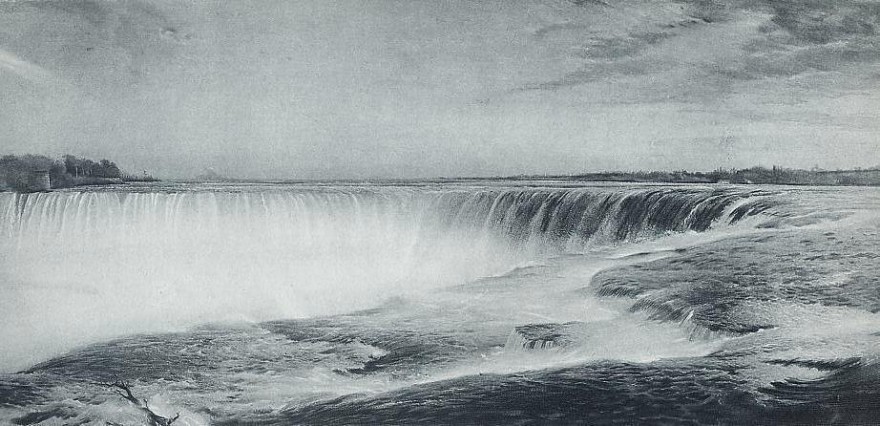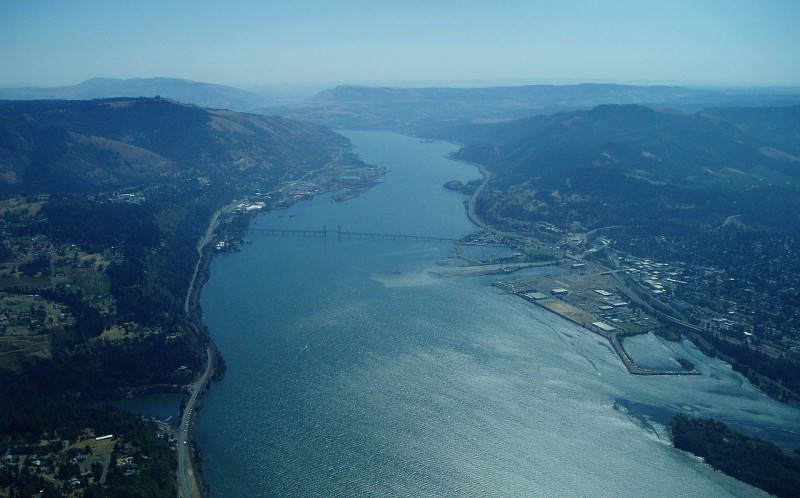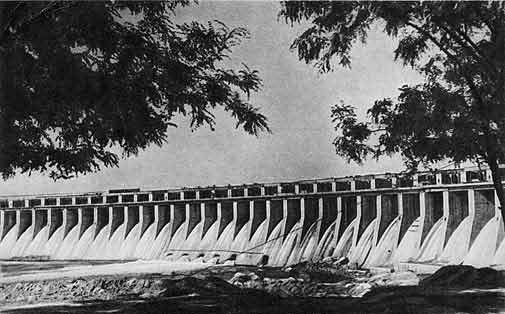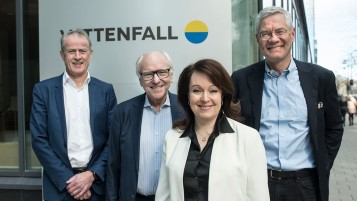
Travel for inspiration
In order to develop the company, Vattenfall employees have always travelled out into the world to learn and be inspired by others. Surprisingly often, they travelled west to the United States. Ahead of many crucial steps in Vattenfall's development, the company has learned from its large neighbour to the west.
In May 1906, then Director Vilhelm Hansen and his assistant Gösta Malm boarded a Hamburg-America line ship to travel to New York. The Swedish parliament had just decided to develop the Trollhätte falls under government auspices by the forerunner to Vattenfall Trollhätte kanal och vattenverk. The hydro power station would be extremely large by the standards of the day.
The most suitable location for studying such power stations was America. In particular, there was interest in the hydro power stations at Niagara Falls – the largest in the world. The trip was meticulously documented, in both text and illustrations. In the preface to his account of the journey, Vilhelm Hansen wrote: 'As a consequence of excellent recommendations, we were virtually invariably received in the most accommodating way, and were given the opportunity to study the plants in detail and also to view drawings and proposals for new construction projects'.

A tale of travel from 1907. The cover of a book about a trip to America and the UK, where hydroelectric plants were studied. Written by Vattenfall's former Director general Gösta Malm. Year: 1907 | Place: - | Creator: Okänd | ID: VF100001
This can be seen as the starting point for all the trips Vattenfall employees have undertaken over the years. The trips were an expression of Vattenfall's desire to acquire outside knowledge and experience. There were no Internet or databases at the time, so these trips allowed the company to discover the latest findings. Vattenfall's employees made study visits and wrote detailed travel accounts, attended fairs and conferences, and were active in various professional organisations.
Travels west and east

Houston. Year: 1970 | Place: Houston, USA | Creator: Okänd | ID: VF000125
Vattenfall continued to study the United States ahead of key strategic projects. One such project during the 1970s was TIDAS, a giant IT project in cooperation with Asea for operational monitoring of Vattenfall's power stations and the national grid. The forerunners of computerised control centres were to be found in North America. To study the technology, a number of employees spent several years at partner company TRW Controls in Houston, the company that developed computer programs for the Apollo project within the American space programme. A lot of knowledge was also acquired from the USA when Vattenfall abandoned the heavy water line of its nuclear programme to switch to Light Water Reactors.
In the mid 1980s, Vattenfall's board travelled to the USA, where they heard about the town of Hood River in Oregon. That was the site of a large-scale experiment in energy conservation. Here Vattenfall formulated its ideas on energy savings as an alternative to building new electricity production plants. These ideas resulted in the Uppdrag 2000 (Mission 2000) project 1986-1990.
Employees did not just travel to the USA. On several occasions Vattenfall headed east to what was then the Soviet Union. Study trips took place in 1956 and 1974. The agenda featured visits to heating plants, hydropower stations and high voltage stations, as well as discussions with the Soviet energy minister.

Hood River. Year: 1980 | Place: Oregon, USA | Creator: Okänd | ID: VF000126

DneproGES power plant. Year: 1947 | Place: Former Soviet union | Creator: Okänd | ID: VF000127
International engagement
Through participation in work within international organisations and networks, such as CIGRE (Conférence Internationale des Grand Réseaux Electriques a haute tension), UNIPEDE (Union internationale des producteurs et distributeurs d'énergie électrique), Eurelectric, WEC (World Energy Council) and Nordel, Vattenfall has also created contacts and embraced ideas from outside. These contacts proved to be of great importance when Vattenfall expanded internationally.
Contacts within UNIPEDE – the international power companies' association – were particularly important for European expansion. Vattenfall's deputy CEO Lennart Lundberg was chairman of the organisation for a time. He could therefore easily contact senior personnel at power companies, which opened doors for Vattenfall in Europe. Vattenfall's CEO Lars G Josefsson had the same position in Eurelecric, the power industry's trade assosiation, 2008-2011.
Video player requires marketing cookies.
To view this content please click here to allow marketing cookies.
Ideas of dam construction from the US (in Swedish)




